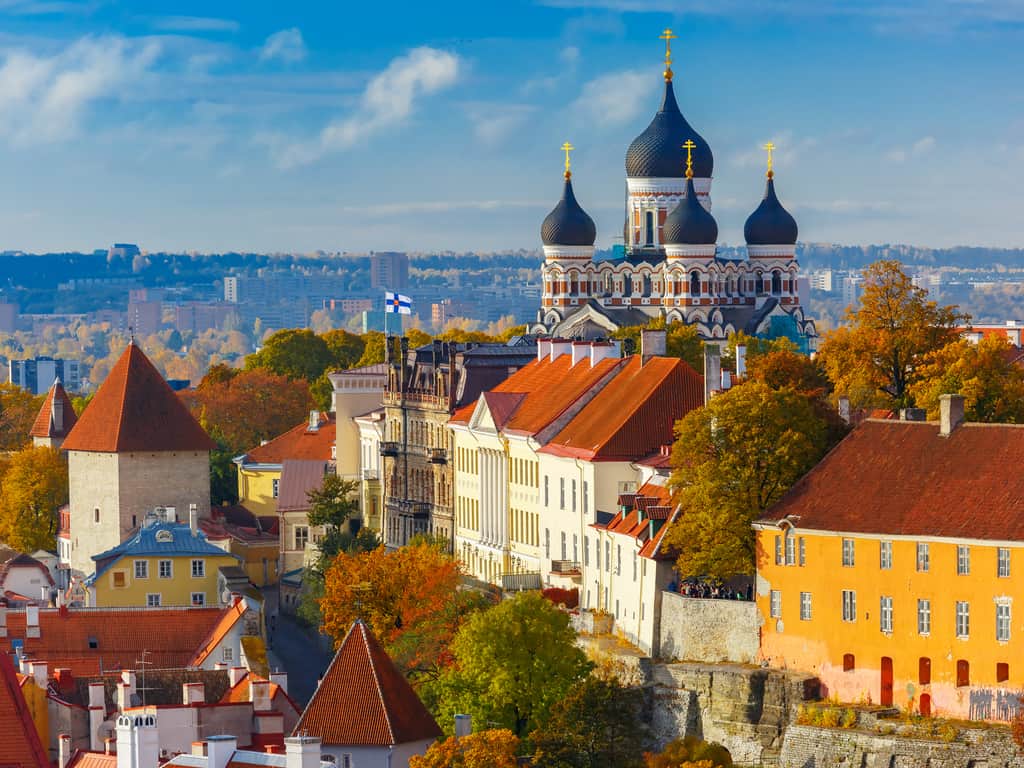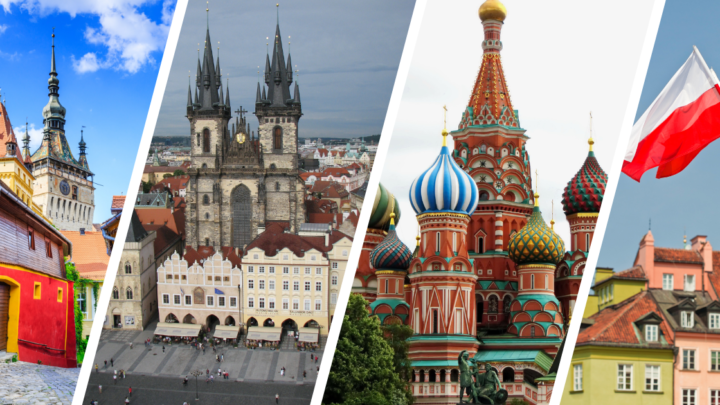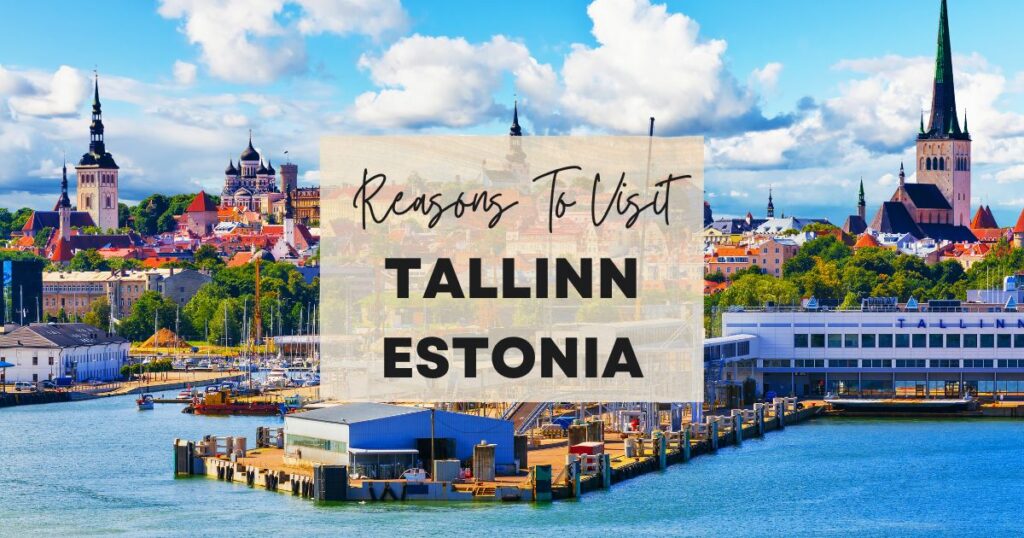Up for an adventure? Tallinn, Estonia, has a lot to offer! Get the most out of your vacation by exploring the best things to do in Tallinn, Estonia, and the best places to visit in Tallinn, Estonia, below. Wondrous Drifter, a Web 3.0 travel startup, hopes to have a significant impact on the world.
Table Of Content
- Aleksander Nevski Katedraali
- Estonian Open Air Museum
- Kadriorg Park
- Kiek in de Kök Fortification Museum
- Kumu Art Museum
- Lennusadam Seaplane Harbour
- Maarjamäe History Centre
- Noblessner Seafront Quarter
- PROTO Invention Factory
- Rotermann Quarter
- St. Catherine’s Passage
- St Mary’s Cathedral
- St. Olaf’s Church
- Tallinn’s City Wall
- Tallinn’s Old Town
- Tallinn TV Tower
- Telliskivi Loomelinnak
- Toompea Castle
- Toompea Hill
- Town Hall Square
- Viru Gate
- Explore Europe
Aleksander Nevski Katedraali
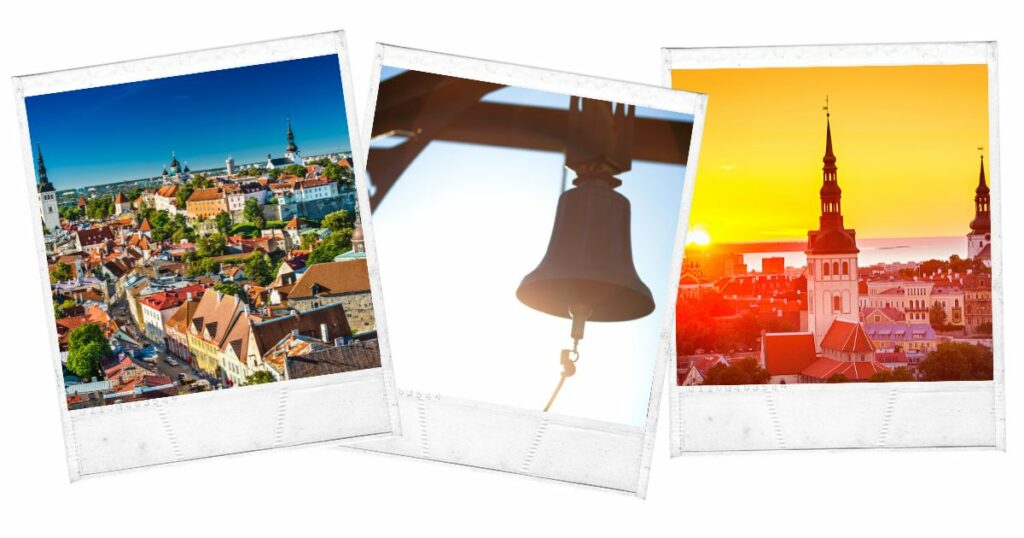
If you gaze at it for a moment, you may mistake the Alexander Nevski Cathedral for St. Petersburg.
Right across the street from Toompea Castle, a majestic Russian Orthodox cathedral that dates back over a century.
It has five onion-shaped domes topped with gold-plated iron crosses and an elaborate brown and white facade.
The tallest bell in Tallinn, which weighs a massive 15 tons, is also housed in the cathedral.
Their cries may be heard throughout the day, ringing out over the city.
Tallinn hasn’t always welcomed the cathedral with open arms, even though it is gorgeous and well-maintained.
Many Estonians in the early to mid-20th century viewed it as a symbol of oppression from Russia and called for its destruction.
However, that plan did not go through, and the cathedral remains as it is today.
Its main feature is an altar decorated with gold and mosaic components seen throughout the cathedral. It is a must-see location!
Additionally, it features 11 intricately painted bells in the form of stained-glass windows, making it one of the city’s most beautiful views for those who appreciate architecture and the arts.
Address: Lossi plats 10, Kesklinna linnaosa, Tallinn
Estonian Open Air Museum
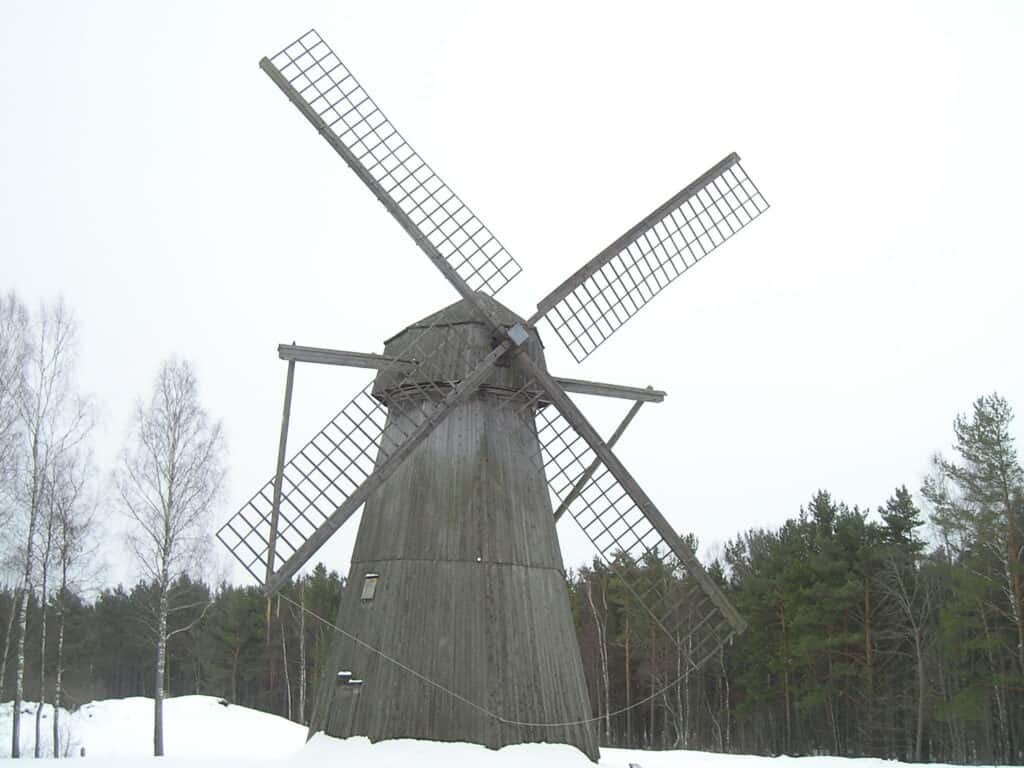
At the Estonian Open Air Museum, you may relive the lives of Estonians who lived hundreds of years before you were born.
A 20-minute drive from the center of Tallinn, this year-round, outdoor, educational attraction has 14 farms that mimic how rural Estonian villages and fishing communities lived from the 18th century to the 20th century.
Tourists may roam around the 72-hectare property’s 74 structures.
A traditional school, seashore fishing shacks, historic residences, a fire station, and windmills, all transported to Tallinn from their original locations, may be found here.
If you’ve worked up an appetite, proceed to the traditional inn for homestyle fares such as wild grits with turnip, mushroom soup, and salt herring salad.
Folk dances, midsummer bonfires, and horseback riding are just a few of the nostalgic activities available to visitors.
Address: Vabaõhumuuseumi tee 12, Haabersti linnaosa, Tallinn
Kadriorg Park
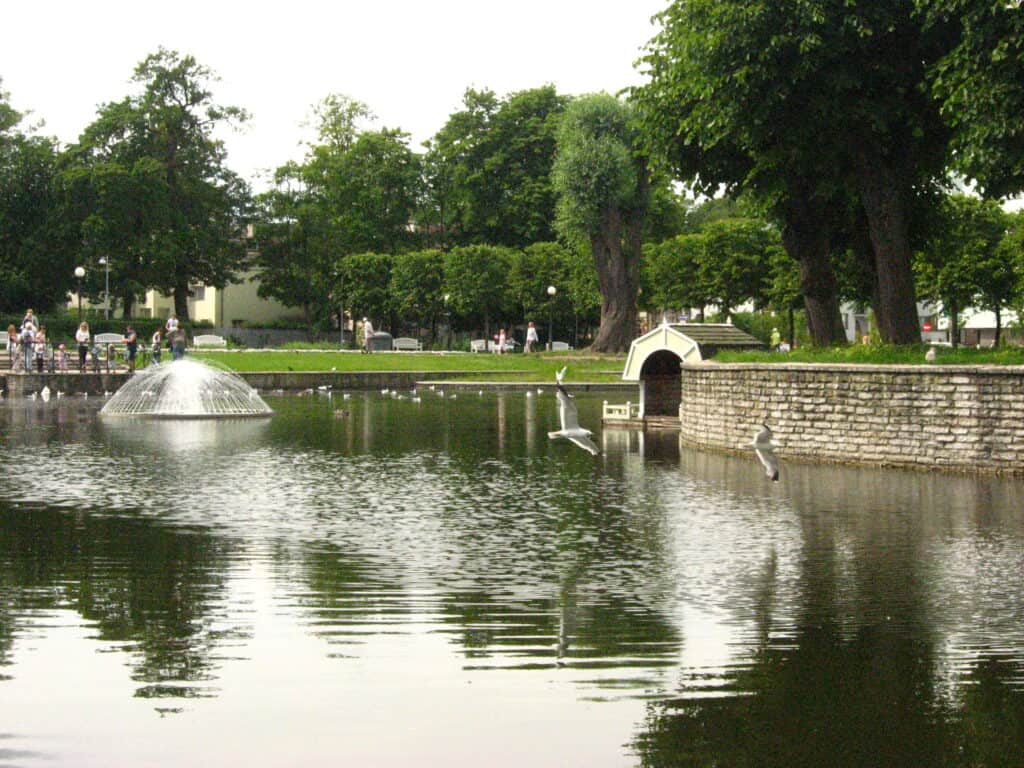
Tallinn’s Aleksander Nevski Katedraali isn’t the city’s sole reminder of Russia’s influence.
At Kadriorg Park and the palace within it constructed by Czar Peter the Great for his wife Catherine in 1718, you can also see it in full bloom.
The beautiful 70-hectare stretch is just four kilometers east of Tallinn’s Old Town and a popular spot for city dwellers seeking a hefty dose of nature therapy.
There is a Japanese garden, an English landscape park with an oak tree, and geometric flower beds for tourists to admire.
Kadriorg Palace is one of the most impressive structures in the park, but it’s not the only one worth mentioning.
The magnificent three-level edifice, influenced by Italian palaces, was built as an imperial summer residence in the early 18th century and today contains the Estonian Art Museum’s gallery of foreign works from the 16th to the 20th centuries.
The Office of the President of the Republic, a salmon-pink, Neo-Baroque edifice, is to the north of the palace and houses the Estonian president.
The flower beds around the Swan Pond and the walkway leading to the president’s mansion are the most popular spots for a walk in the park.
Address: August Weizenbergi tänav 10, Kesklinna linnaosa, Tallinn
Kiek in de Kök Fortification Museum
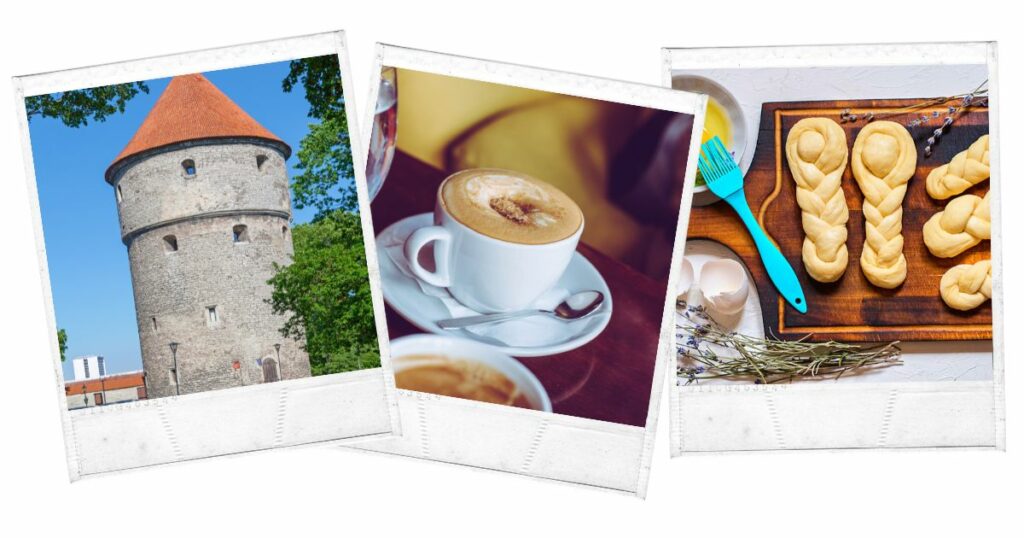
In the Kiek in de Kök Fortifications Museum, visitors may learn about Tallinn’s fascinating past through its underground corridors and defense towers.
As you make your way along the Old Town Wall, you’ll glimpse the city’s distinctive defenses.
From here, tourists may begin their exploration of Toompea’s great network of 17th and 18th-century secret tunnels (Bastion Passages) that flow underneath the hill’s fortified bastions.
There is a Carved Stone Museum in the tunnels, where you may learn about Tallinn’s history by looking at carved stone pieces from the 16th to the 19th centuries on exhibit.
When it was first erected as a defense tower in the 14th century, it was also a popular pub and a residence for painters and musicians.
Explore the exhibitions on Tallinn’s cafe culture, sweets manufacturers, and the tower’s intriguing history today.
Alternatively, take a stroll around the city wall for stunning views of the city.
Address: Komandandi tee 2, 10130 Tallinn, Estonia
Kumu Art Museum
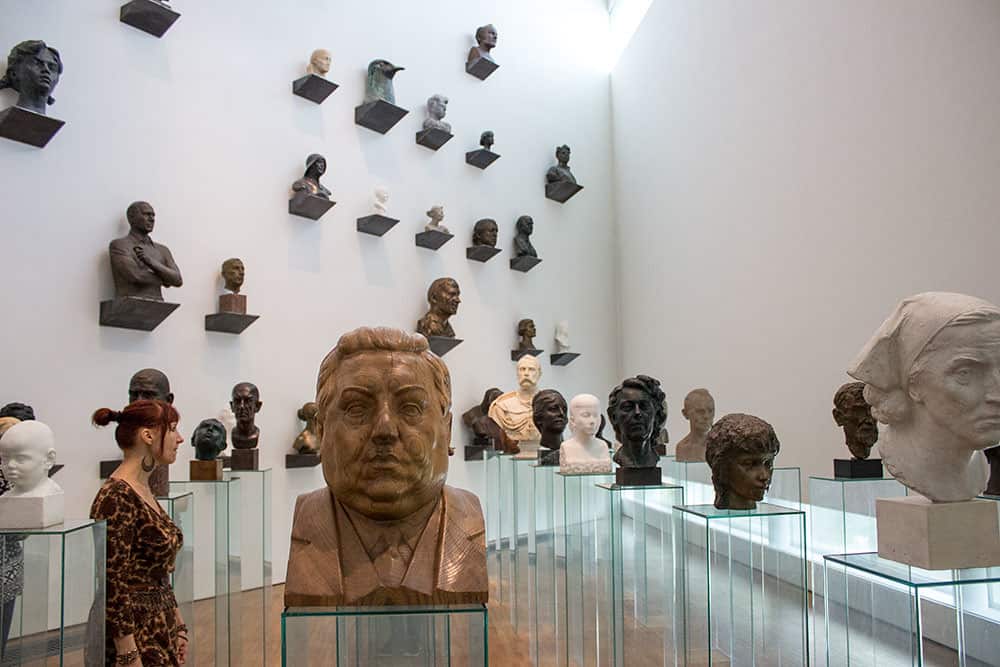
Visit the award-winning Kumu Art Museum, which houses the Estonian Art Museum, once you’ve gotten enough fill of Kadriorg Park.
It acts as a museum of modern art and an educational facility, among its many functions.
The Gallery of Contemporary Art, which has become a breeding ground for new ideas for both Japanese and international artists, is where Kumu sees its function as a catalyst for cultural and social discussion.
The museum’s collection includes works by Estonian artists of the present day and installations.
The exhibits are well-organized and accompanied by archival film.
Museums must exhibit their collections to spark arguments about the works’ meanings and provide a variety of interpretive contexts.
Before Kumu opened, individuals had limited access to Estonian art classics and Soviet art, which was only made feasible after Kumu opened.
To reach a broad audience, exhibits must speak to a variety of people, including those who are well-versed in the art and those who aren’t, as well as people of all ages and backgrounds.
Address: August Weizenbergi tänav 34, Kesklinna linnaosa, Tallinn
Lennusadam Seaplane Harbour
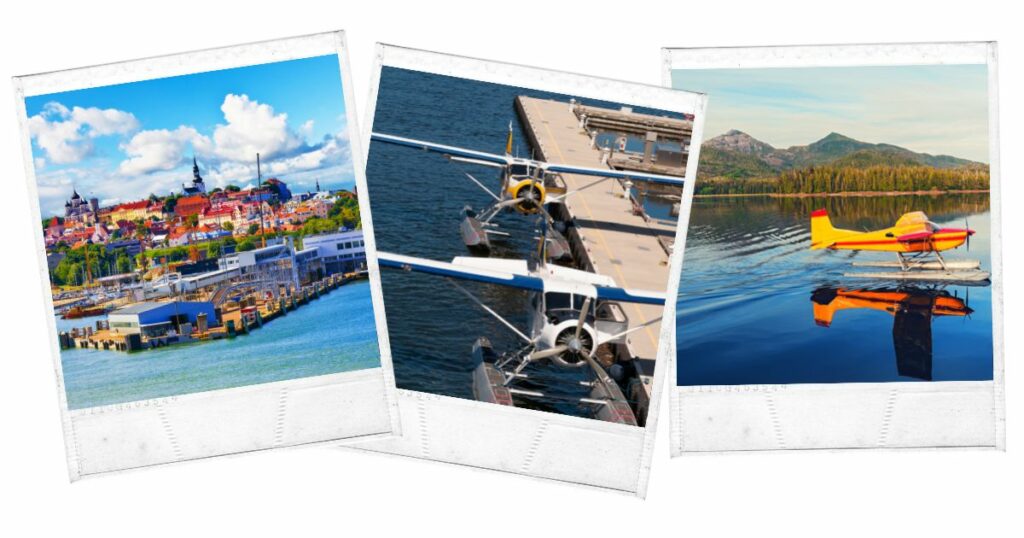
The Seaplane Harbour is home to Europe’s most spectacular maritime museum!
The Lennusadam Seaplane Harbour is the best spot to explore Estonia’s marine culture, thanks to the country’s 2,300 islands.
Submarine EML Lembit, a vessel from the 1930s and a rare survivor of its age, is displayed in this intriguing museum.
The Suur Tll icebreaker’s captain’s cabin, crew quarters, and officers’ meal hall are open to the public.
Hundreds of marine relics continue to tell Estonia’s maritime history across the museum.
Nearly two hundred historically accurate artifacts may be found in the historical seaplane hangar.
It includes a submarine named Lembit, an icebreaker named Suur Tll from the early twentieth century, an aircraft named Short 184, and more. There is also a museum store and a cafe called MARU.
Since the opening of the Seaplane Harbour display, the Maritime Museum has become one of Estonia’s most popular attractions.
Activities and resources for self-guided tours are fun and educational for children and adults alike.
Address: Vesilennuki tänav 6, Põhja-Tallinna linnaosa, Tallinn
Maarjamäe History Centre

Estonia’s history is chronicled at the beautiful Maarjamäe Palace’s History Museum’s permanent display from its origin to the present day.
The Film Museum, also housed in this building, looks into cinema’s rich history. In addition, the park around the palace features several Soviet-era monuments on display.
The contemporary Memorial to the Victims of Communism and the Soviet-era Jääretke Obelisk, dated 1960, is located outside the History Center.
The Tallinn Song Festival Grounds, home to our renowned national song festivals, which attract upwards of 30,000 artists, and a host of other international events, are just a few blocks away.
In addition, the Maarjamäe Palace Park has been transformed into an outdoor gallery for the show.
Memories” is an exhibition that gathers Soviet-era monuments and sculptures to provide a fresh, impartial environment for the monuments.
Visitors may better understand the totalitarian state’s history and the ideological underpinnings and techniques of Soviet society.
At the Maarjamäe Palace complex, you’ll find the recently renovated Estonian Film Museum, relaxing places, and even a playground for children.
Address: Pirita tee 56, Tallinn Pirita
Noblessner Seafront Quarter
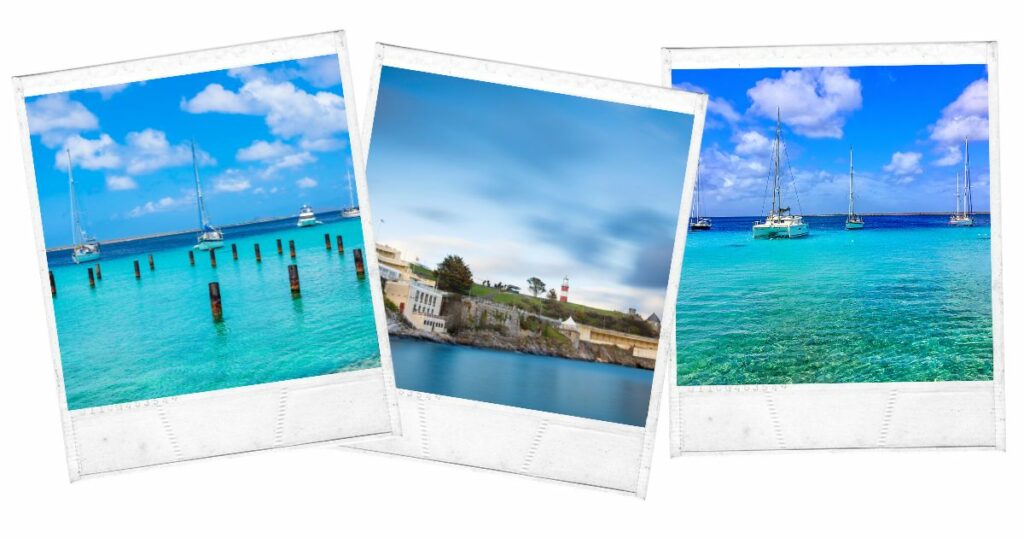
Tallinn’s old submarine shipyard Noblessner is now undergoing the most rapid development, making it one of the city’s most intriguing neighborhoods.
You’ll love Noblessner’s unusual and colorful architecture, which boldly combines old and new, adjacent to Kalamaja’s hipster quarter and the Seaplane Harbour.
Many of the area’s stores, restaurants, and pubs also have a strong sense of style and design.
This beachfront sector, a former submarine industry founded by Emanuel Nobel (nephew of Alfred Nobel, who founded the Nobel Prize) and Arthur Lessner, is just a short distance from the Seaplane Harbour.
It has been transformed into an urban oasis complete with art galleries, boutiques, a marina, and waterfront restaurants where you can watch the sunset.
Noblessner is also home to the Proto Invention Factory, which mixes virtual reality, science, and imagination into a unique visitor experience.
Kai Art Center is certainly worth a visit for modern art enthusiasts.
Address: Tööstuse 48, 10416 Tallinn, Estonia
PROTO Invention Factory

Imagine driving the world’s first automobile, locomotive, hot air balloon, or strolling on the seafloor.
Thanks to the opening of Europe’s first PROTO Invention Factory, it’s possible!
There is no other place on Earth where you may witness the newest technological innovation come to life like this: the abandoned submarine factory.
You’ll feel at home as though you were in Jules Verne’s laboratory.
The worlds of virtual reality, science, and imagination collide in PROTO Invention Factory.
Thanks to the interactive displays in this kid-friendly destination, you may learn about physics and technology from a different perspective and try out things you’d never do in real life.
All ages and skills may participate in the VR experience, which begins with a short set of instructions.
As a bonus, a children’s section at PROTO full of fun and educational activities for young visitors.
So, do you want to design, invent, or fly? Proto is the place to go for guests of all ages.
Address: Peetri 10, 10411 Tallinn, Estonia
Rotermann Quarter
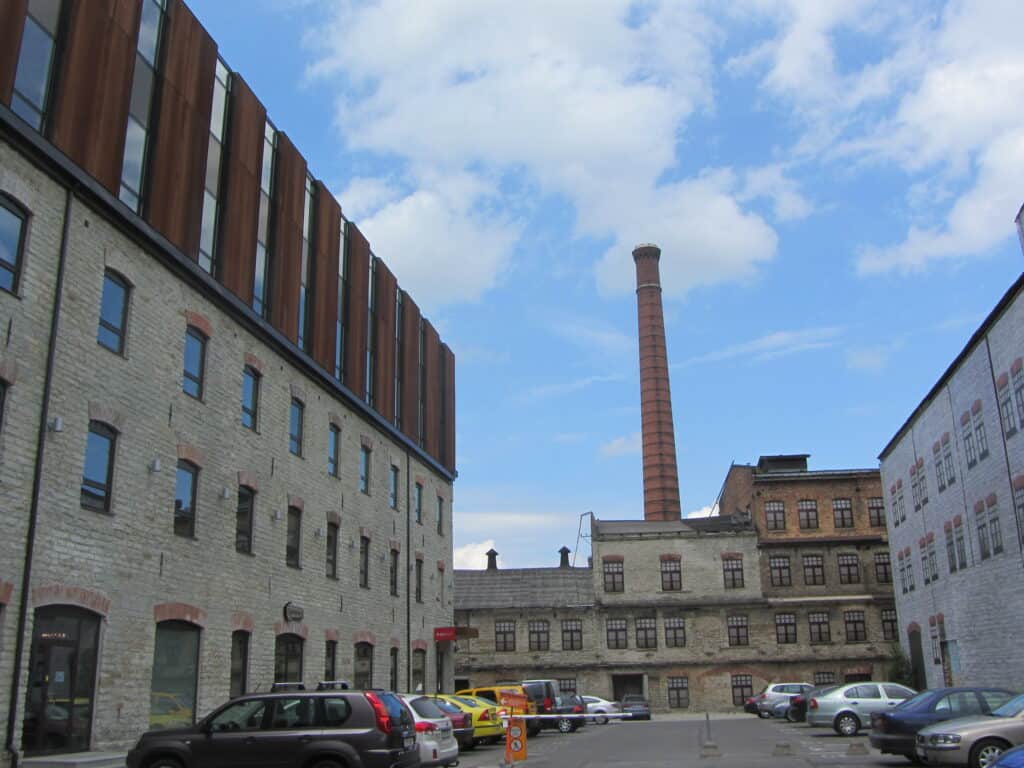
In the center of Tallinn, between the Ancient Town, the Port, and Viru Square, in the Rotermann Quarter, old industrial buildings have been repurposed, and modern architecture has been constructed.
A department store, a factory producing starch and spirit (tables and pasta), a mill that made bread and flour, and a steam saw building are all located in the industrial district.
It all began to thrive in the 19th century and is one of the most remarkable limestone structures in Estonia.
A Baltic German, Ernst Boustedt, designed the building for the Museum of Estonian Architecture in 1908, and it currently houses the museum.
Rotermann Quarter is home to many eateries, boutiques, and a multiplex cinema called Coca-Cola Plaza.
Just how far the city has reinvented itself in recent years may be seen in its avant-garde architecture.
There are a variety of businesses in the region and a vibrant cultural scene, thanks to the incredible restoration work that’s been done.
Festivals and outdoor events frequently take place in the district’s main square.
Address: Rotermanni 8, 10111, Tallinn, 10111, Estonia
The world is your oyster. Go travel, as there is so much beauty in the world. Kick off your world travel by checking out our travel the world guide. If you’re going to travel the world, you have to visit the United States first. Thanks to the multicultural heritage, cuisine from all around the world are offered here in the US. Discover the nice states to visit in USA.
St. Catherine’s Passage
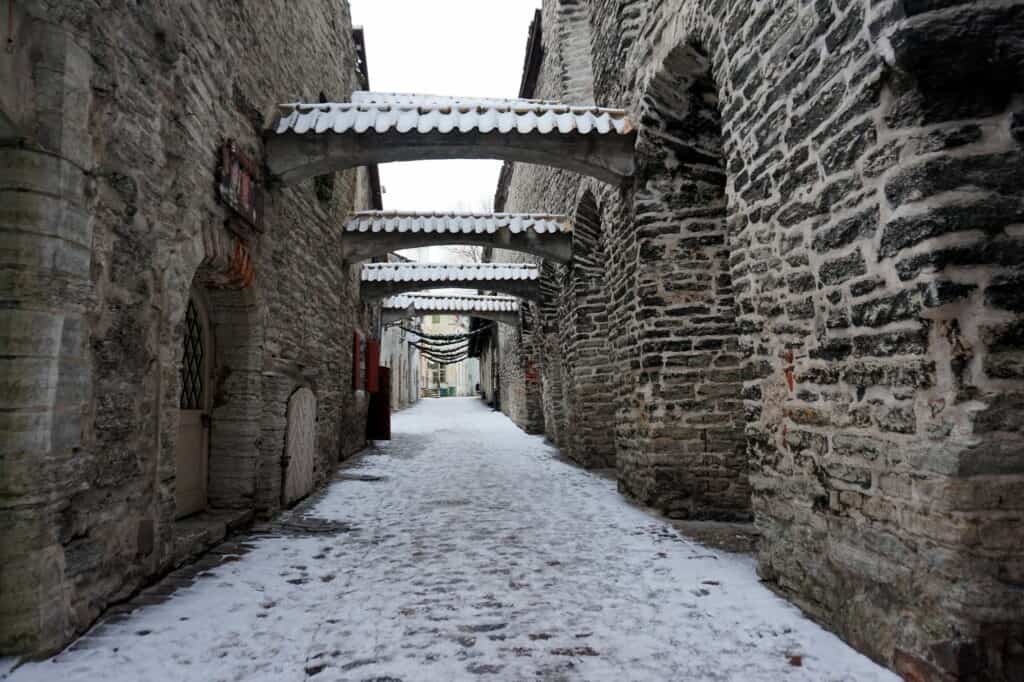
It is small yet beautiful; St. Catherine’s Passage seems like it hasn’t altered in a thousand years and is fascinating to walk through.
The cobblestone tunnel, named after the old church it runs alongside, links Vene to Muurivahe street and is flanked by several magnificent medieval structures.
Some workshops and studios let visitors witness artisans at work, including those who manufacture pottery, glassware, leather goods, or weave fabrics.
There is also a cafe where you can relax and enjoy the beautiful building and ambiance surrounding you as you shop for gifts.
Historically known as Monk’s Alley, Catherine’s Alley snakes its route from Vene Street through the Dominican monastery’s southern end to Müürivahe Street.
St. Catherine’s church, which gave the alley its name, is believed to have been erected more than 700 years ago.
Buildings fill the alley’s southern half from the 15th through the 17th centuries. A 1995 restoration brought back much of the alley’s medieval beauty.
Many handcraft studios can be located here, where you may observe the artisans at work crafting various items like pottery, hats, and glass, for example.
Address: Estonia
St Mary’s Cathedral
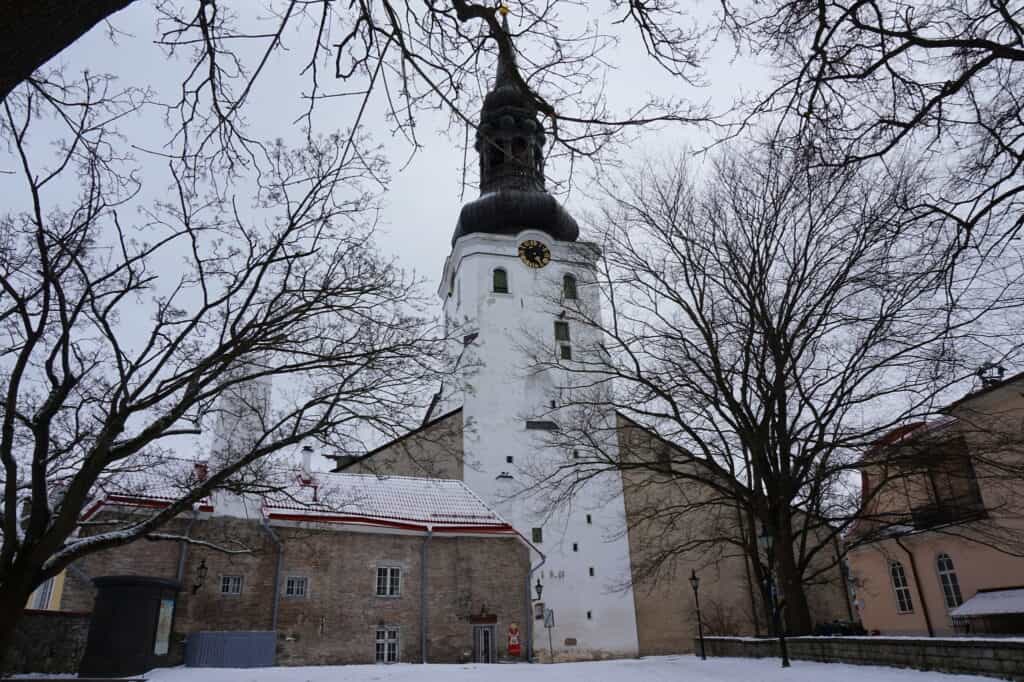
In Tallinn and the rest of Estonia, the majestic St Mary’s Cathedral was completed in 1233.
It is the oldest place of worship. As a result, it currently belongs to the Estonian Evangelical Lutheran Church.
In addition to the artworks, there are also several historical artifacts on show.
A trip to the top of the 69-meter bell tower provides stunning vistas.
You’ll see a significant stone plaque that says, “Otto Johann Thuve, landlord of Edise, Vääna, and Koonu Ehis tomb, 1696 A.D.” just inside the main door.
Thuve, who is now known as “Tallinn’s Don Juan,” was a notorious drinker and womanizer in Tallinn.
The dying man requested that he be buried at the church’s entrance so that God-fearing worshipers might finally purify him of sin when they kneel to pray upon arriving.
It’s possible to climb the 69-meter-tall, Baroque bell tower to get a breathtaking perspective of the city from the church’s interior!
Address: Toom-Kooli 6, 10130 Tallinn, Estonia
St. Olaf’s Church
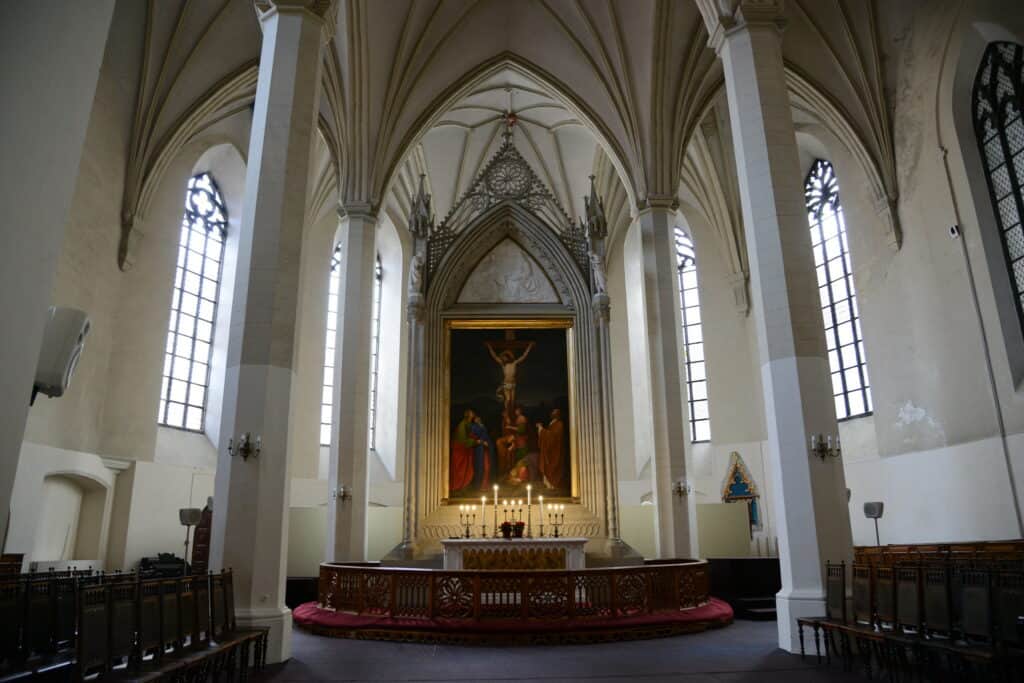
If you’re in Tallinn, you have to climb to the top of the city’s famous Gothic church, which used to be the tallest.
This magnificent cathedral, named for Norway’s King Olaf II, is Tallinn’s most enormous medieval edifice.
Despite being built in the 1200s and being struck by lightning multiple times, this structure is still in remarkable shape.
In 1267, the church was first talked about. In time, it became one of the leading churches in the Lower Town.
It also had its congregation, which at first was mostly made up of people from Scandinavia.
It started in Tallinn in 1523 when Zacharias Hasse, then the church chaplain, started preaching about God and how people should follow him.
Its 123-meter-tall spire was once the highest building on the planet. You’ll be able to see the entire city from its top.
Despite its limited interior, it’s worth a peek inside to view some stunning stone sculptures.
Address: Lai 50, 10133 Tallinn, Estonia
Tallinn’s City Wall
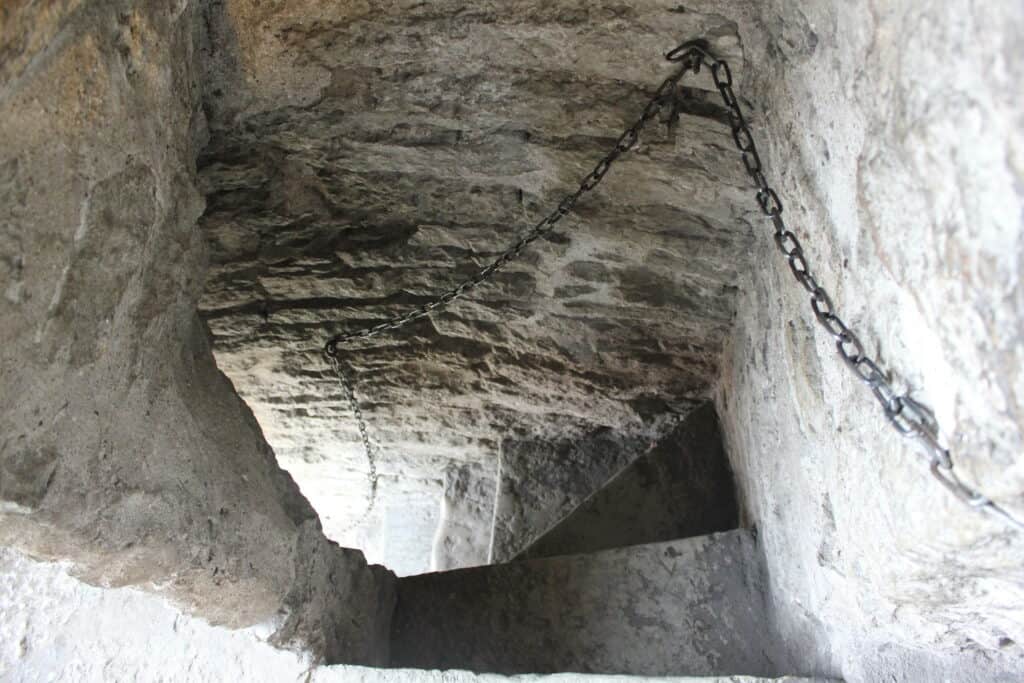
It’s easy to envision medieval invaders storming the town’s walls if you visit this wall section that links Nunna, Sauna, and Kuldjala towers.
Tallinn’s 1.9-kilometer city wall and 20 defense towers are still intact as Europe’s best-known medieval structure.
In reality, the system of walls and towers that encircle Old Town is a significant part of what lends it its mythical enchantment.
Head to the northwest corner of Old Town to see the wall from the interior of these three towers.
It’s an excellent place for tourists to climb up Nunna Tower for a stunning perspective of Old Town’s red-tiled rooftops.
Although the town’s defenses were initially put in place in 1265, it wasn’t until the 14th century that the current outline of the wall was established.
The wall had 46 towers and a length of 2.4 kilometers at its height in the 16th century. It was 14 to 16 meters high and up to three meters thick.
Overlooking Old Town, almost half of the ancient towers still stand, conjuring heroic knights and helpless damsels.
Several of the Town Wall’s towers are open to the public as museums, and a few others are reserved for children and teenagers.
The Patkuli observation point on Toompea and Tornide väljak (Towers’ Square), a park near the railway station, is the finest site to observe the wall from the outside.
Address: Väike-Kloostri 1, 10133 Tallinn, Estonia
Tallinn’s Old Town
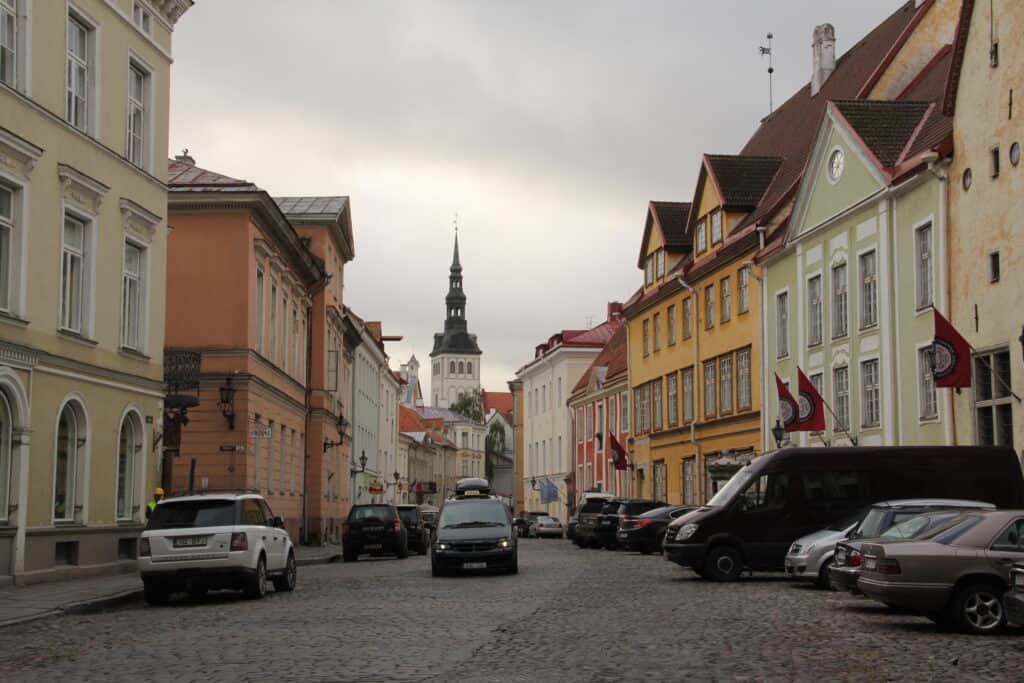
Once you’ve entered the Town Hall’s church-like interior, the fun begins!
There are countless gems in Tallinn’s Old Town for history enthusiasts and culture seekers alike.
As one of the world’s most well-preserved Hanseatic town centers, the bustling village-like district is filled with cobblestone streets and colorful cafes.
The Town Hall Square is the best place to begin your journey.
The brightly colored structures may lure you into gazing but look down instead until you uncover a round stone that has been inscribed with directions.
From its top, you can view the steeples of five of Tallinn’s old churches.
The oldest town hall in Northern Europe was built in 1404, and it has stunning Gothic arches and priceless artwork.
The Viru Gate in Tallinn’s Old Town is another renowned landmark.
This 14th-century tower, formerly part of the city’s defensive system, boasts fairy-tale-esque, circular turrets capped with coned roofs suited for a princess.
Almost two kilometers of the ancient city wall remain. From Toompea Hill’s Patkuli viewing platform, you may obtain a fantastic glimpse of this ancient edifice.
A guided tour of Tallinn’s Old Town is a great way to taste the city’s culture. Having a knowledgeable guide relate the tales that surround this part of the city will enhance your sightseeing experience.
Address: Tallinn, Estonia
Tallinn TV Tower
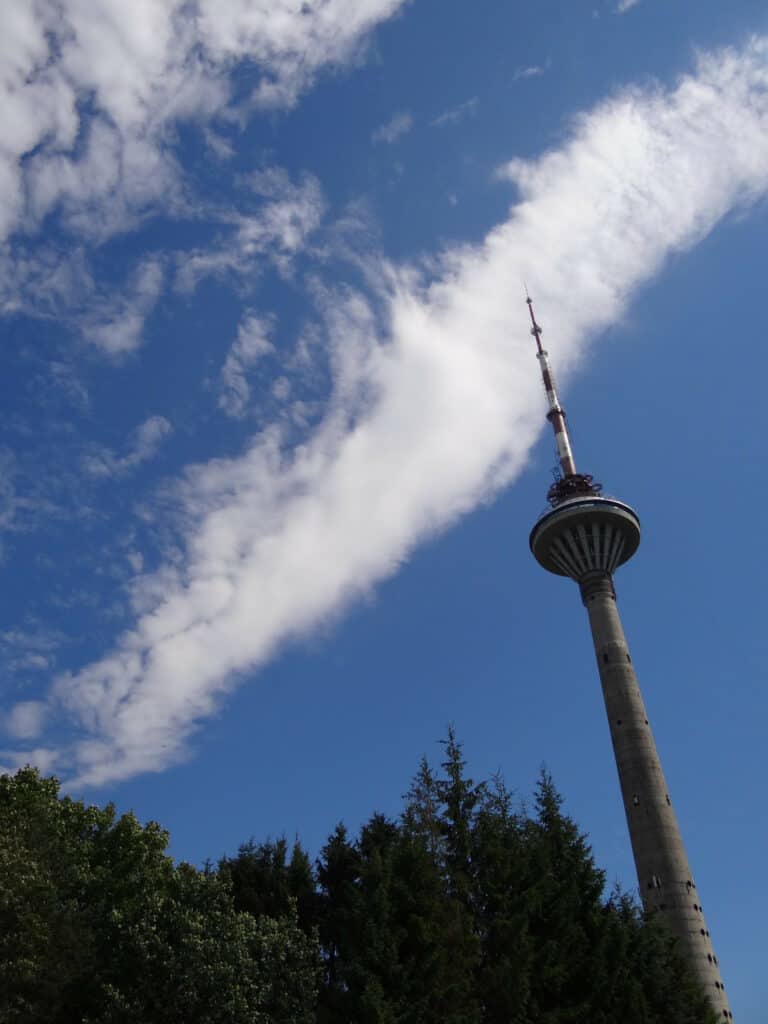
Do you crave a surge of adrenaline? The Walk on the Edge event at the Tallinn TV Tower is worth checking out.
The Tallinn TV Tower, which stands 314 meters above the ground, is a must-see in Estonia.
One of the most popular activities is to go up to the observation deck on the 21st level.
Tourists may enjoy breathtaking views of Tallinn and the Gulf of Finland from the top of the city’s observation tower. When taking a tour around the area, don’t forget your camera.
You’ll be harnessed up and able to wander along the outside terrace of the tower.
There is a 175-meter drop, and you can even put your feet out over it. Don’t look down!
Other, less frightful attractions at this Tallinn tourist destination are available for visitors, including families and couples.
A 49-second elevator ride to the observation deck is open for tourists.
The TV studio on the first level is a great place to get a taste of broadcast journalism and record your news segment.
The history of Estonia’s highest skyscraper, including its construction for the 1980 Summer Olympics, may be learned at the TV Tower history display.
Get your tickets online in advance to avoid spending time in a big wait.
Address: Kloostrimetsa tee 58a, Pirita linnaosa, Tallinn
Telliskivi Loomelinnak
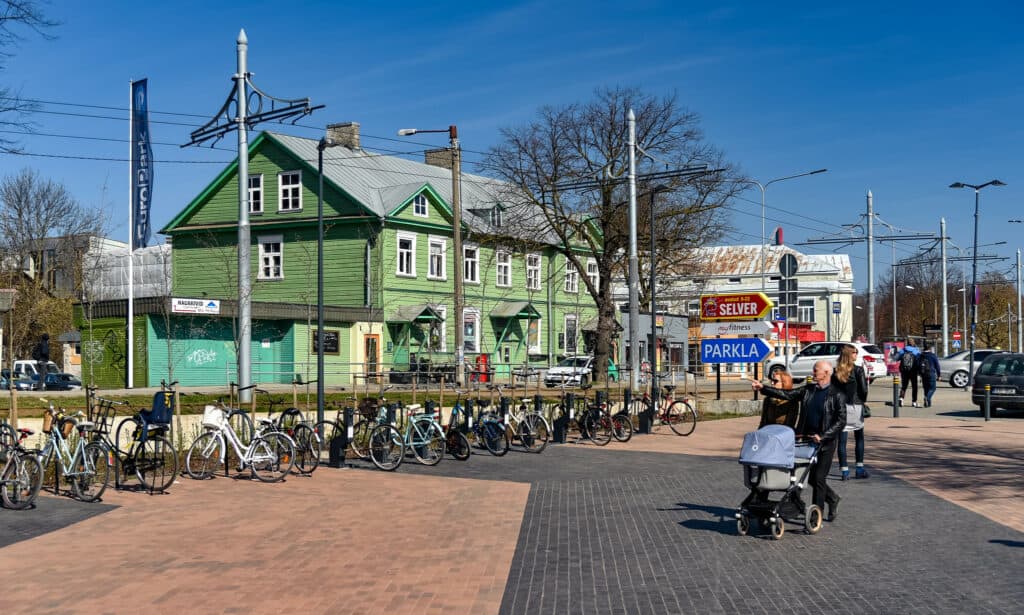
In Tallinn’s old industrial district, Telliskivi Creative City is home to a diverse collection of creative businesses, start-ups, and eateries.
The Fotografiska Tallinn Photography Museum, the Juhan Kuus Documentary Photo Center, the Sltumatu Tantsu Lava Theatre, a modern dance platform, the LaMuu Ice Cream Factory, the Erinevate Tubade Klubi venue, and numerous more creative businesses are all located in the city’s creative core.
Throughout the year, the Creative City hosts over 800 different cultural events.
There are also more than twenty distinct pieces of street art that can be discovered around this artistic metropolis.
Small, inexpensive boutiques and Estonian design stores surround a cozy, creative ambiance ideal for a brief visit before traveling to a local event.
You will find a Reval cafe where you can relax and watch the world go by and vintage and design boutiques for children and adults.
There is so much to do and see in this area.
Restaurants and bars may be found in a stylish, industrial-looking neighborhood on every street corner. It’s a must-see!
Address: Harju maakond, Põhja-Tallinna linnaosa
Toompea Castle
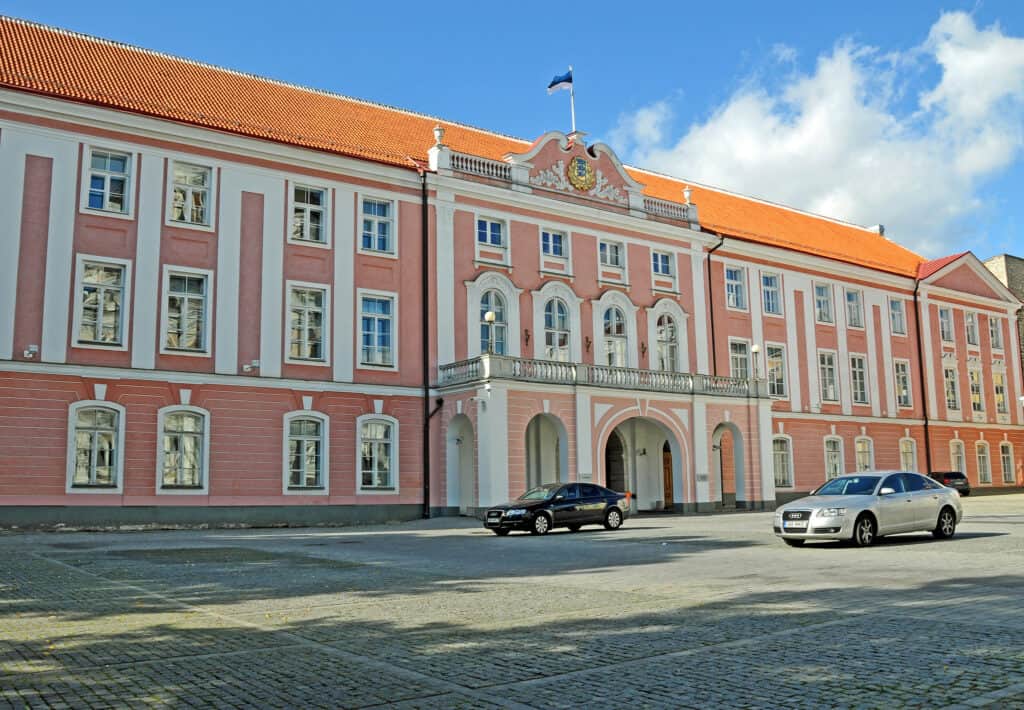
In Estonia, Toompea Hill has long served as the country’s political center.
The Toompea Castle, established in the 13th century by the German Knights of the Sword, has undergone a series of transformations over the past 800 years.
Beginning with the stone construction created by the German Knights of the Sword and ending with the Baroque palace completed by Catherine the Great.
Tall Hermann tower, built in the 14th century, serves as a reminder of the country’s freedom every morning when the Estonian flag is raised atop it.
Free guided tours of the Toompea Castle are available on weekdays with previous bookings in Russian, English, or Estonian.
While there, you’ll be able to peer inside the beautiful structure and hear tales of its illustrious past.
To get the best perspective of Tallinn after your trip, head about 500 meters north to the Patkuli viewing platform. The port is well visible from this vantage point.
Address: Lossi plats 1a, Kesklinna linnaosa, Tallinn
Toompea Hill
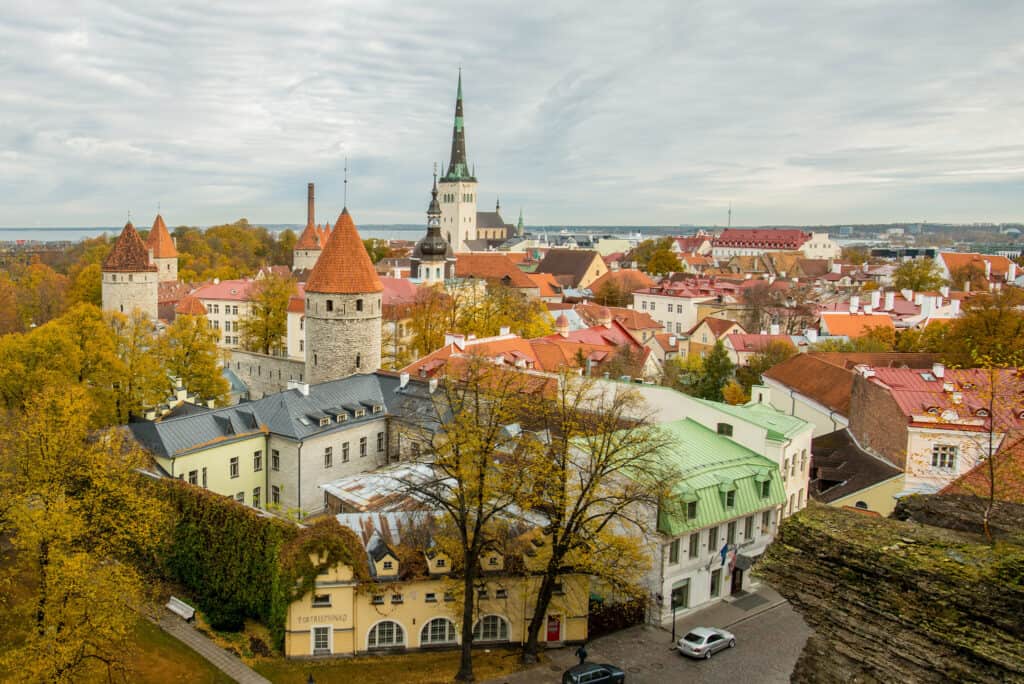
Known as the burial mound of Estonian mythical hero Kalev, it is a fascinating spot to explore. As well as having a plethora of lovely historic buildings, it also provides stunning cityscape vistas.
With a height of about 20 or 30 meters, Toompea Hill has long been a symbol of power and dignity, despite its small stature.
Several significant historical landmarks may be located atop the little limestone peak, including Toompea Castle, St. Olaus Church, and the Aleksander Nevsky Cathedral.
Toompea is now part of Tallinn’s Old Town, which UNESCO lists as a World Heritage Site.
In Estonia, Toompea is known as “Toompea” because it is the heart of the government and the parliament (the Riigikogu).
To the southwest of Toompea Castle sits Toompea Castle and the Tall Hermann tower, where the Riigikogu gathers.
Landscapes of the surrounding area may be seen from several platforms near Toompea.
Address: Tallinn, Estonia
Town Hall Square
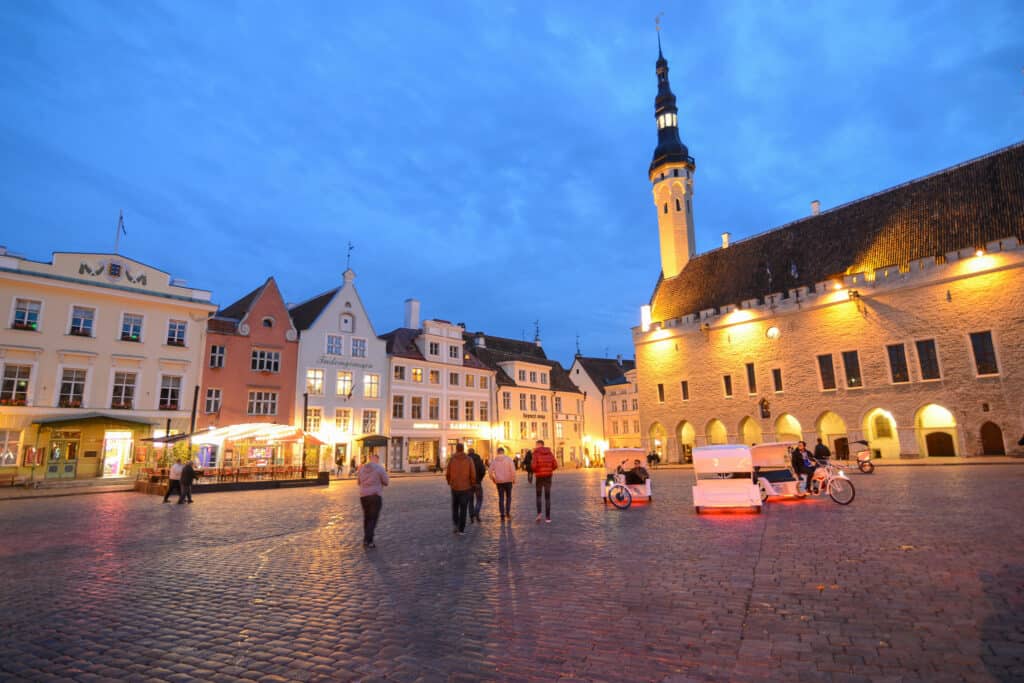
With its lively Town Hall Square, Tallinn serves as the city’s center of gravity. Cafés, restaurants, and bars surround the vast area, and traditional markets are conducted in its middle, surrounded by historic structures.
Today, it continues to play a significant role as a square. The Old Town Days and other medieval festivities are held there.
It is also used as a location for open-air concerts, fairs, and other events during the summer. It transforms into a magical Christmas market in the winter, complete with a tall spruce tree as its focal point.
The Brotherhood of the Blackheads is credited for erecting the world’s first Christmas tree in 1441, which started the local custom of celebrating the holiday.
It’s hard to imagine a more central location in Old Town than Town Hall Square.
It’s a natural draw for visitors, surrounded by opulent merchant mansions and crammed with cafe tables in the summer.
Address: Tallinn, Estonia
Viru Gate
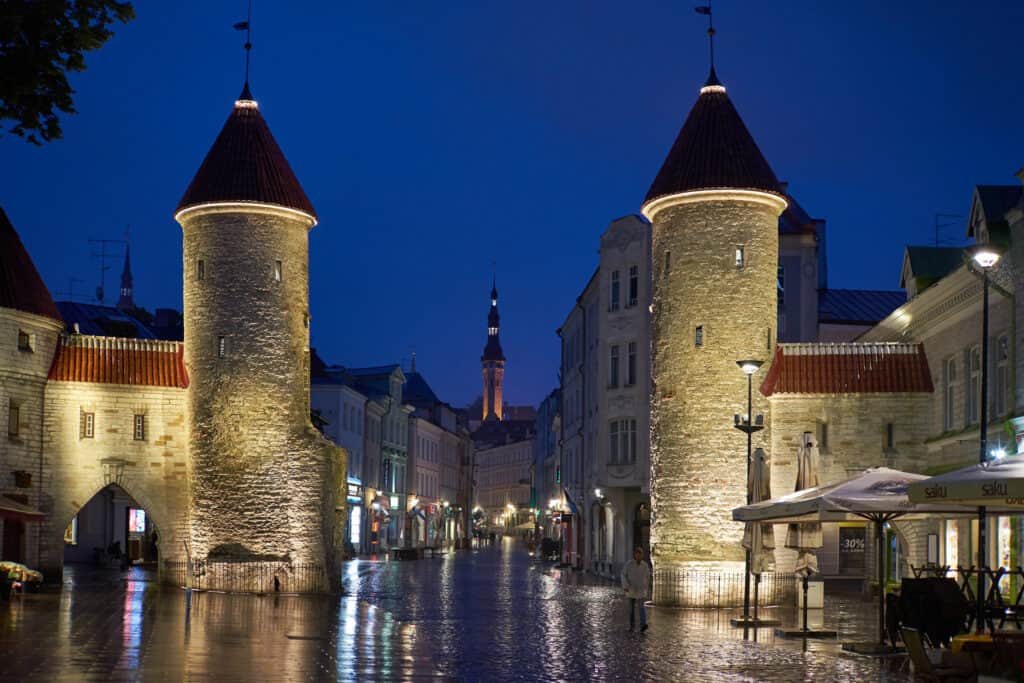
For many visitors to Tallinn, seeing the ivy-covered stone towers of the Old Town as they enter the city is one of the most unforgettable experiences.
For centuries, Viru Gate was a component of a larger system of gatehouses and towers that spanned the city of Helsinki.
The gate’s towers open into Viru Street, a lively pedestrian thoroughfare home to several stores, cafés, and street sellers.
Tallinn’s 14th-century city wall was protected by a barbican located at Viru Gate.
After a few centuries, it had eight gates, each of which had numerous towers and curtain walls that linked them together.
To keep the barbicans safe, they had one or two tiny round towers attached to the main entrance.
Several gates to the Old Town were removed when the entrances to the city were expanded.
Trams connected the Old Market with Kadriorg, and the Viru Gate had to pay its share of the bill.
Corner towers, on the other hand, have been retained. In addition, there is a section of the bastion known as Musumägi that may still be seen.
Many stores and restaurants have made Viru Street one of the most famous pedestrian thoroughfares in the Old Town that is a must to visit!
Need more convincing to travel to Tallinn, Estonia, right? Visit reasons to visit Tallinn, Estonia, at least once in your lifetime here.
Address: Viru tänav, 10140 Tallinn, Estonia

